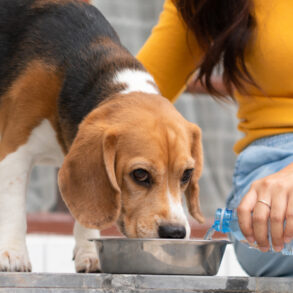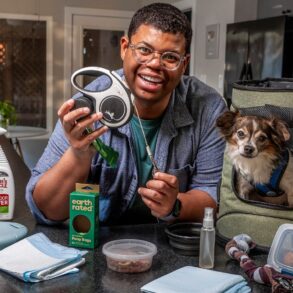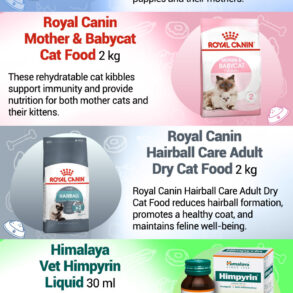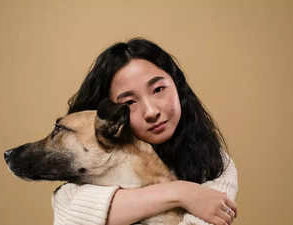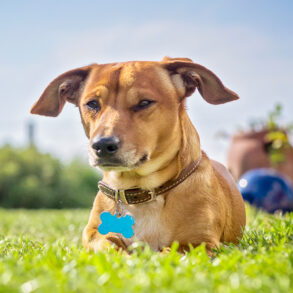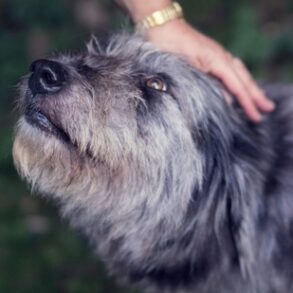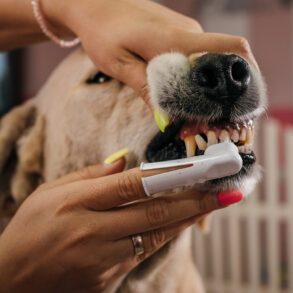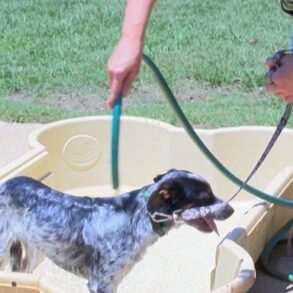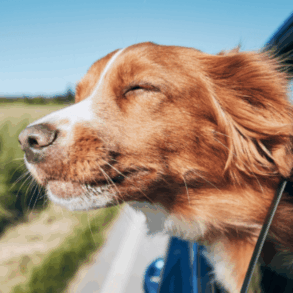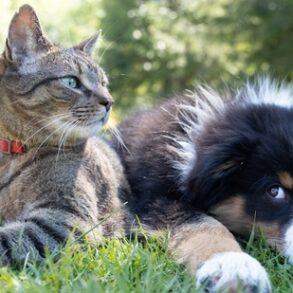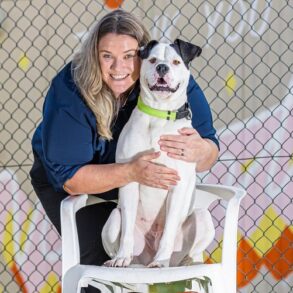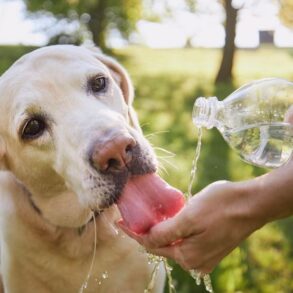The human-dog connection runs deep. Dogs are so tuned in to their people that they catch their human’s yawns — even if they simply hear the yawn rather than see it.
“The emotional connection between humans and dogs is the essence of the relationship,” said Clive Wynne, a professor of psychology and director of the Canine Science Collaboratory at Arizona State University. “Dogs are amazingly social beings, so they are easily infected with our warmth and joy.”
We asked dog experts for tips on how to strengthen the bond between owners and their dogs. Here’s their advice.
Gaze into your dog’s eyes
One study found that when you and your dog share a long, loving gaze, both of you get a boost of oxytocin, a calming hormone associated with love and bonding. “When humans and dogs are interacting and looking into each other’s eyes, they both get more oxytocin — there’s a positive feedback loop,” said Larry Young, a professor of psychiatry and an expert on the neuroscience of social bonding at Emory University in Atlanta. “In the short term, it dampens the stress response, including cortisol release.”
Embrace baby talk
If you find yourself chatting with your dog in a sing-songy voice, don’t fight it. People often talk to dogs in a slightly higher pitched voice than they do to other adults, and it turns out that dogs appreciate it.
Research has found that dogs actually pay better attention to “dog-directed” speech and “dog-relevant” words than adult-directed speech, and that this style of speech may strengthen the bond between you. “Dogs understand our tone of voice and our meaning,” said Lori Kogan, a psychologist and professor in the clinical sciences department at Colorado State University. “We instinctively talk to children in a higher pitch because it’s comforting. It’s the same way with our dogs.”
Richard Heaton, 53, a business owner in the U.K., has taken this principle to the next level. After going for a walk together on a rainy day, Heaton will sing a little tune he calls “The Drying Song” while using a special towel to dry off Buddy, his golden retriever. “It never fails to make his tail wag and bring a smile to my face,” he said. “It’s become a fun and special part of our routine.”
Run errands with your dog
Identify situations your dog enjoys and bring them along. If your dog loves riding in the car, consider taking them on errands with you. “Keep the car window open and they’ll pick up a cocktail of scents,” said Marc Bekoff, professor emeritus of ecology and evolutionary biology at the University of Colorado at Boulder and author of “Dogs Demystified: An A-to-Z Guide to All Things Canine.” (If your dog gets car sick, don’t do this.) “Pay attention to their body language, whether they look happy or tense,” Bekoff said, and make decisions based on their reactions.
Let your dog cheer you up
Snuggling is good for you. Human-dog tactile stimulation has been found to improve the dog owner’s well-being and self-esteem, according to research. Dogs are sensitive to their humans’ emotional state, and their desire to play is incompatible with you being subdued or angry, said Daniel Mills, a specialist in human-animal relationships and a professor of veterinary behavioral medicine at the University of Lincoln in England. “Dogs often use manipulative strategies with attention-seeking gestures such as a play bow to improve your mood.” If you give in to your dog’s desire to play when you’re in a bad mood, he added, “it cheers you both up.”
Learn new tricks (even if you’re both old)
Consider training your dog to roll over, catch a Frisbee or jump through a hula hoop. It’s a myth that you can’t teach old dogs new tricks. Research has shown that dogs of all ages respond well to touch-screen games and that such learning might even help keep older pups mentally sharp as their physical capabilities decline.
Plus, it can be a feel-good experience you can enjoy together. “Teaching a dog something new that’s in the flavor of what they like to do is part of enriching their lives,” Bekoff said.
Create rituals
Whether you have a routine that involves tucking your dog into their bed at night, baking special treats for them on weekends, or playing a particular game during the “zoomie hour,” dogs thrive on consistency and routine.
On chilly mornings, Rhianna Jones, 32, often makes her dog, Charlie, a cup of warm bone broth. Sometimes she’ll have one, too, but usually she sticks with coffee. Either way, “the act of sharing a nourishing beverage strengthens our connection and adds a touch of joy to our mornings,” said Jones, a nurse in Georgia. “I like to imagine Charlie appreciates this cozy routine as much as I do.”
Ultimately, what dogs want most is to “trust you and feel safe, secure and comfortable with you,” Bekoff said. So if a routine “makes you feel good and your dog feel good, it continuously builds up or maintains the bond. That’s all part of love.”
Stacey Colino is a writer, specializing in health and psychology, and co-author of “The Purest Bond: Understanding the Human-Canine Connection.” You can follow her on Twitter at @ColinoStacey.
This post was originally published on this site be sure to check out more of their content.








